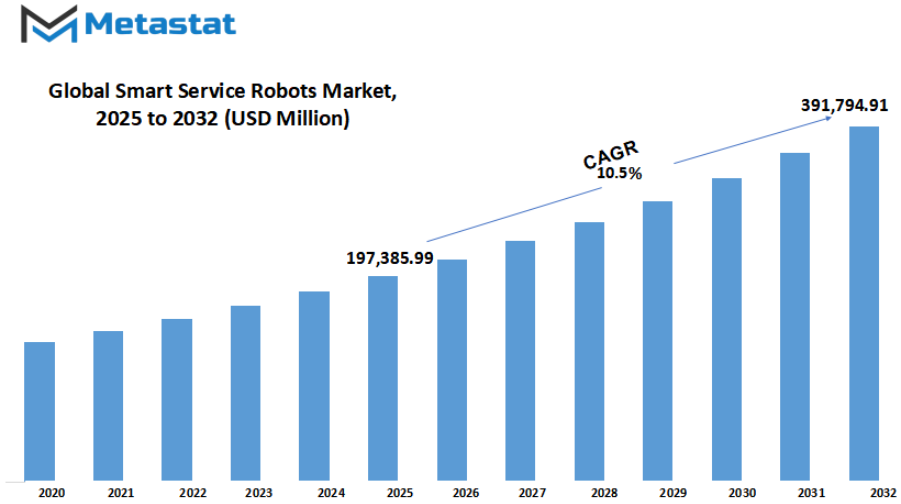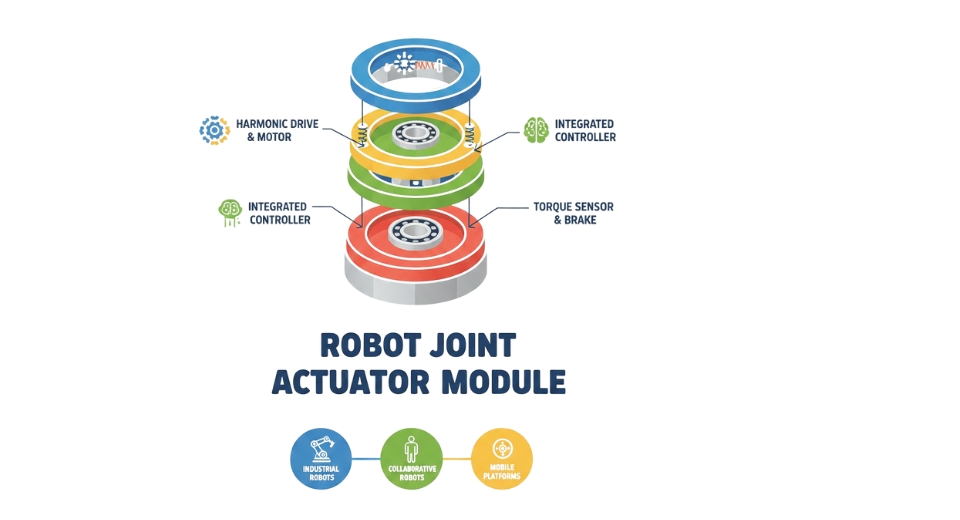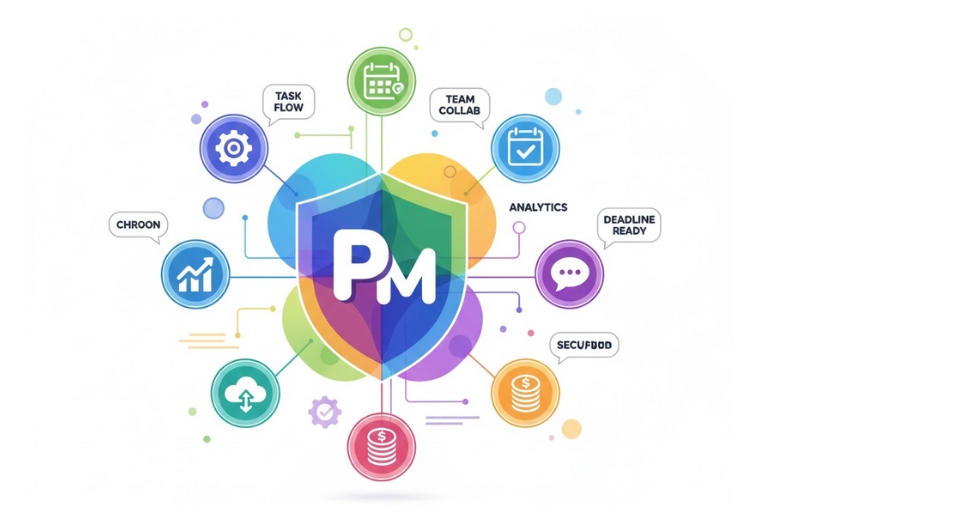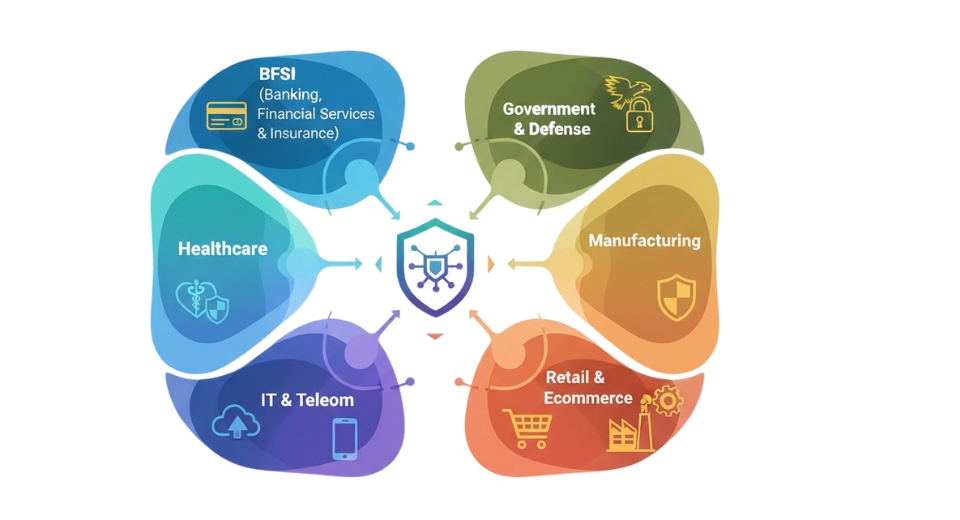MARKET OVERVIEW
The global smart service robots market has been progressively attracting more attention because of the direction technology is taking toward automating directly into human daily life. As opposed to factory-limited industrial robots, smart service robots are programmed to coexist with individuals at home, hospitals, offices, and open spaces. This field of robotics is not just mechanical support but also about intelligence, flexibility, and independent decision-making based on live data. As sectors keep searching for alternatives that are efficient and personalized, the global smart service robots market will keep growing into a fundamental component of how societies deal with routine and specialized activities. The market around these robots is much more varied than initially supposed.
One side sees medical applications in which the robots will serve to monitor patients, prepare for surgery, or rehabilitate. The other sees service settings like hospitality and retail turning to robots for customized customer interaction and support within operations. Outside of these fields, security services, logistics, and home assistance will find robust adoption as the technology develops. It is what distinguishes smart service robots from traditional automation that they can learn through interaction to enhance results without constant human oversight. This capacity for adaptation will define the larger identity of the global smart service robots market as it becomes a common element of infrastructure. One of the prominent characteristics of the sector is how it tapped innovation from various streams of technology. Artificial intelligence, sensor technology, cloud computing, and new materials all come together to make up the backbone of such robots.
All these pieces will go towards creating machines that are more intuitive, safer, and more efficient in human environments. The joint venture between robotics firms, computer scientists, and hardware makers will be what guarantees that no one field determines the advancement; rather, it will be the convergence of several fields that provides the industry with its identity. Societies in the next few years will not just embrace such robots for practical use but will start to regard them as friends or allies in some other aspect of life. Aging care will be a field where there is rapid acceptance, since aging groups need solution that work reliably and are responsive. Education will look to service robots for offering interactive teaching tools, introducing future generations to technology in real terms.
Even families that previously defied automation will slowly accept the convenience of robots that can clean, sort, or remind. This shift in culture will reaffirm the significance of the global smart service robots market to ensure that it is not only a technology industry but also a social one. In the future, the industry will find itself with questions regarding regulation, ethics, and trust. These challenges will not derail the forward movement, however. They will instead inform standards that set the pace for how the technology becomes embedded in society in a responsible manner. As the global smart service robots market grows, it will provide industries, researchers, and consumers the ability to reinvent how technology works on behalf of humans, no longer as an abstraction but as a real-world aspect of daily existence.
Global smart service robots market is estimated to reach $391,794.91 Million by 2032; growing at a CAGR of 10.5% from 2025 to 2032.

GROWTH FACTORS
The global smart service robots market is heading toward critical change, aided by quick technological advancements and increased demand from various industries. Growing demand for automation within service sectors will be among the most robust drivers of growth for this market. Organizations are increasingly looking towards smart service robots for enhancing efficiency, minimizing human error, and simplifying everyday operations. From hospitals integrating robots to assist patients to hotel services using them to assist customers, the real-world applications are widening at a constant rate. This increased dependence on automation emphasizes the key role that intelligent service robots are going to serve in shaping the service delivery system in the years to come.
Technological improvements in artificial intelligence and sensor technologies will further boost the growth of the global smart service robots market. Smarter sensors and more responsive algorithms enable robots to execute actions with increased adaptability and accuracy. Enhanced navigation, more effective human-robot interaction, and improved decision-making are building machines that can manage intricate tasks previously believed to be unachievable. All these innovations will not only enhance current applications but also bring trust in implementing robots for new applications, paving the way for increasing integration across various sectors. In spite of the obvious opportunities, there are some challenges that could hinder the rate of uptake. Initial investment costs will still be a problem for most organizations, especially small and medium-sized enterprises that would struggle to find funds for sophisticated robot systems.
Secondly, privacy and data security concerns will question how securely robots handle personal information in fields like healthcare, finance, or personal services. Resolution of these issues through better regulatory structures and newer security protocols will be critical to assuring market growth. In the future, the spread of smart service robots into new markets holds the promise of creating profitable opportunities. New industries like retail, logistics, and agriculture are now starting to realize the value of incorporating smart service robots into their business practices. Robots may handle stock, facilitate order fulfillment, or provide support in precision agriculture to deliver more cost-efficient and productive results.
All of these advances will expand the scope of the market considerably and provide value to a wide variety of economic activities. In the coming years, the global smart service robots market will keep improving with both demand and technology advancing. With artificial intelligence and automation as key drivers, the market will see innovation and growth. Financial and security challenges will need to be overcome, but the potential benefits suggest strong long-term growth. As sectors evolve and implement robotic solutions, intelligent service robots will be an integral component of advanced service systems, defining how work is done and how efficiency can be gained.
MARKET SEGMENTATION
By Type
The global smart service robots market is gaining attention as industries and households continue to look for advanced solutions that support efficiency and convenience. The demand for intelligent machines that can perform tasks with accuracy is pushing companies to invest in robotics development. As technology improves, the global smart service robots market will see rapid expansion with applications spreading across healthcare, retail, logistics, and personal assistance. The introduction of new designs and functions will allow these robots to adapt to changing expectations and provide services that were once thought to be out of reach.
By type, the global smart service robots market is further segmented into Humanoid Robots, Non-Humanoid Robots, and Other categories. Humanoid Robots are expected to play a strong role in personal and professional settings because of their ability to interact in a more natural way with people. These robots will be able to assist in hospitals, care centers, and customer service roles, offering both physical support and communication. Non-Humanoid Robots, on the other hand, will become essential in industries where task execution matters more than appearance. These machines will handle warehouse management, automated delivery, and cleaning with precision, helping businesses reduce operational costs and improve productivity. The Other category includes specialized robots designed for unique tasks, ranging from disaster response to agricultural monitoring, showing how flexible robotics can be in addressing global challenges.
The global smart service robots market will continue to benefit from the combination of artificial intelligence, sensor development, and connectivity. Future robots will learn faster, understand environments better, and complete tasks without constant human supervision. This progress will encourage both small businesses and large enterprises to adopt robotic solutions. With rising urbanization and an aging population, demand for robots that can provide healthcare assistance, companionship, and daily support will steadily increase.
In the coming years, the global smart service robots market will move beyond being just a technological trend and will become part of everyday life. The ability to improve safety, save time, and provide reliable assistance will create long-term growth opportunities. With governments and private investors funding research, new breakthroughs will continue to shape the next generation of robots. As acceptance grows, these machines will no longer be viewed as optional tools but as essential partners in addressing both personal and industrial needs. The global smart service robots market will transform how tasks are approached, opening the way for a future where robots contribute to improved living standards and stronger economic growth.
By Application
The global smart service robots market is expected to play a major role in shaping how industries, homes, and personal spaces operate in the future. With advancements in robotics and artificial intelligence, these systems are becoming more efficient, adaptable, and useful in everyday life. By application, the market is divided into professional, personal, and domestic use, each segment showing unique growth potential and practical benefits that will influence how people live and work in the coming years.
In the professional segment, robots are being developed to assist in healthcare, logistics, hospitality, and retail. Hospitals will increasingly depend on them for tasks such as patient monitoring, medication delivery, and even surgery assistance. In warehouses and distribution centers, service robots will improve efficiency by handling repetitive and heavy tasks, reducing human strain while boosting productivity. Hotels and customer-facing industries will also adopt them for check-ins, cleaning, and delivering a smoother experience to visitors. The demand for faster, safer, and more reliable services will ensure that professional applications remain one of the strongest areas for growth within the global smart service robots market.
The personal segment highlights a shift toward individual convenience and lifestyle enhancement. Smart robots designed for personal use will support elderly care, provide companionship, and assist with health monitoring. As the global population ages, demand for such support will rise sharply. Service robots will also contribute to education, acting as learning aids and interactive companions for children. The personal category demonstrates how robotics will not just serve industries but will also become part of daily living, offering comfort and assistance tailored to individual needs.
Domestic use is expected to remain a vital contributor to market expansion. Household robots will continue to focus on cleaning, security, and maintenance tasks. Vacuum cleaning, lawn mowing, and smart surveillance systems are already present in many households, but the future will see more advanced models with the ability to adapt to changing environments and learn from user behavior. With growing urbanization and busy lifestyles, reliance on domestic service robots will steadily increase, making everyday living easier and more efficient.
Overall, the global smart service robots market shows strong promise across all three segments. Professional applications will drive efficiency in industries, personal robots will provide support and care, and domestic use will bring convenience to households. Continued innovation, coupled with rising demand for automation, will ensure that smart service robots become a central part of future life.
|
Forecast Period |
2025-2032 |
|
Market Size in 2025 |
$197,385.99 million |
|
Market Size by 2032 |
$391,794.91 Million |
|
Growth Rate from 2025 to 2032 |
10.5% |
|
Base Year |
2024 |
|
Regions Covered |
North America, Europe, Asia-Pacific Green, South America, Middle East & Africa |
REGIONAL ANALYSIS
The global smart service robots market is expected to see remarkable growth across different regions as technology adoption increases and industries expand their reliance on automation. Each geographical area contributes in a unique way, shaped by economic strength, industrial demands, and technological infrastructure. The regional distribution highlights both current strengths and future opportunities that will shape the direction of this market.
North America is positioned as one of the strongest markets due to advanced research facilities, a strong presence of technology leaders, and a high level of investment in robotics across sectors. The United States continues to lead with growing use of smart robots in healthcare, logistics, and defense, while Canada and Mexico show rising interest through manufacturing and service-based applications. This region will continue to play a key role as industries demand higher efficiency and faster automation.
In Europe, countries such as the UK, Germany, France, and Italy are steadily pushing the market forward with government support and policies encouraging automation. Germany, with its advanced industrial base, is expected to dominate in manufacturing robotics. Meanwhile, the UK and France are focusing more on healthcare and service-driven applications. Europe’s strong commitment to innovation will keep this market active, ensuring steady expansion across the continent.
Asia-Pacific represents the fastest-growing segment, led by China, Japan, India, and South Korea. China is rapidly deploying service robots in both industrial and consumer markets, while Japan continues to innovate in healthcare and elderly care robotics. South Korea shows strong development in electronics and AI integration, and India is gradually adopting robotics in sectors like retail, education, and logistics. This region will remain central to global growth due to its strong population base, rising investments, and demand for automation.
South America is gradually adopting smart service robots, with Brazil and Argentina showing potential in manufacturing, healthcare, and agriculture. Growing awareness of robotics technology and an increasing focus on cost-effective solutions will drive further adoption in the region. While growth is slower compared to Asia-Pacific and North America, the long-term outlook is promising as industries modernize.
The Middle East & Africa, including GCC countries, Egypt, and South Africa, are at an early stage but are showing increasing interest in smart service robotics. GCC nations are investing in futuristic infrastructure and smart city projects, while South Africa is exploring robotics in healthcare and security. Although adoption is still limited, rising demand for advanced technology will create opportunities in the coming years. With these regional developments, the global smart service robots market will expand significantly, driven by technological progress and rising industry demand worldwide.

COMPETITIVE PLAYERS
The global smart service robots market is moving toward a future where intelligent machines will not only perform repetitive tasks but also bring efficiency, convenience, and reliability to everyday life. Demand for service robots is expanding across industries such as healthcare, hospitality, logistics, and retail, where automation is needed to address labor shortages and rising operational costs. Continuous progress in artificial intelligence, sensors, and machine learning will allow these robots to adapt to new environments, making them more capable of understanding human needs and interacting safely in public and private spaces. This growth is not limited to one region but is being observed worldwide, as countries invest heavily in robotics to enhance productivity and provide solutions for aging populations and workforce challenges.
Competition among leading companies will define the pace of innovation in this market. Keenon Robotics Co., Ltd. and Pudu Technology Inc. are already transforming the hospitality sector with robots designed to deliver food and services efficiently. SoftBank Robotics Group has made significant strides in creating robots that interact with people in customer service environments, while Bear Robotics, Inc. and Relay Robotics, Inc. continue to focus on advancing delivery robots for restaurants and hotels. Simbe Robotics, Inc. has introduced robots that improve retail operations by managing inventory and monitoring store shelves in real time, which reduces human error and improves accuracy.
Blue Ocean Robotics and Aethon, Inc. are focusing on robots for healthcare and hospital automation, an area expected to grow rapidly as medical facilities aim to reduce pressure on staff while improving patient care. Pal Robotics and UBTECH Robotics are working on humanoid robots designed to provide assistance in both educational and caregiving settings. RobotLAB Inc. brings robotics into classrooms to enhance learning, while Boston Dynamics pushes the boundaries with highly mobile machines capable of navigating complex terrains.
Industrial automation also plays an important role in shaping the global smart service robots market. Companies such as Universal Robots, KUKA AG, Rethink Robotics, and Yaskawa Europe GmbH are leaders in robotic arms and collaborative robots that work safely alongside humans in factories, warehouses, and production lines. These developments show how service robots will become more versatile and widely accepted in industries that require both precision and adaptability.
Future growth of the global smart service robots market will rely heavily on collaboration between technology developers and industries that need practical solutions. As competition intensifies among the major players, advances in intelligence, safety, and design will ensure robots are not only functional but also valuable partners in daily activities, business operations, and social environments.
Smart Service Robots Market Key Segments:
By Type
- Humanoid Robots
- Non-Humanoid Robots
- Other
By Application
- Professional
- Personal and Domestic
Key Global Smart Service Robots Industry Players
- Keenon Robotics Co., Ltd.
- Pudu Technology Inc.
- SoftBank Robotics Group
- Bear Robotics, Inc.
- Relay Robotics, Inc
- Simbe Robotics, Inc.
- Blue Ocean Robotics
- Aethon, Inc
- Pal Robotics
- UBTECH Robotics
- RobotLAB Inc.
- Boston Dynamics
- iRobot
- Universal Robots
- KUKA AG
- Rethink Robotics
- Yaskawa Europe GmbH
- Blue Frog Robotics
WHAT REPORT PROVIDES
- Full in-depth analysis of the parent Industry
- Important changes in market and its dynamics
- Segmentation details of the market
- Former, on-going, and projected market analysis in terms of volume and value
- Assessment of niche industry developments
- Market share analysis
- Key strategies of major players
- Emerging segments and regional growth potential








 US: +1 3023308252
US: +1 3023308252






